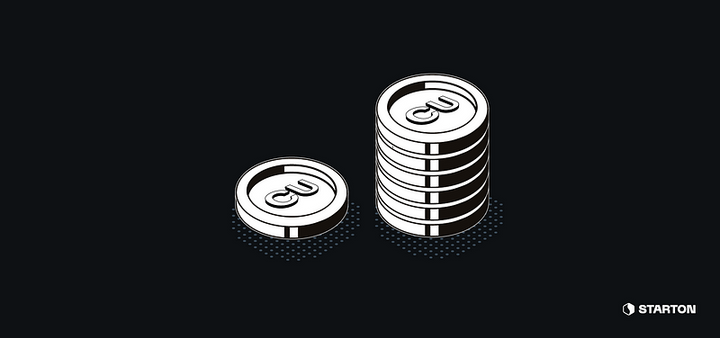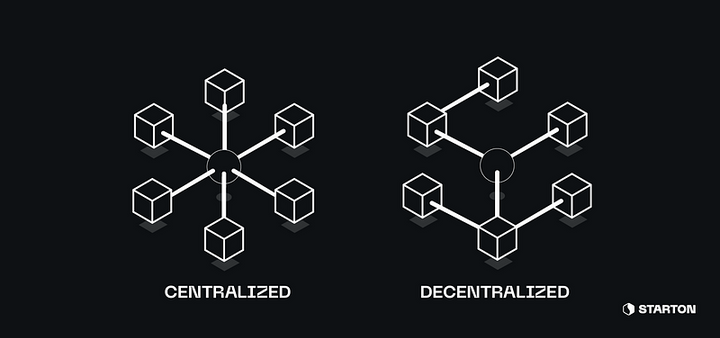Interact with a smart contract from code using Starton Connect
In this second tutorial, we’ll use Starton Connect to Interact with an ERC20 smart contract in order to mint new tokens.

In this second tutorial, we’ll use Starton Connect to Interact with an ERC20 smart contract in order to mint new tokens.
The smart contract has been created following our first tutorial on “How to Deploy a smart contract from code using Staton Connect”.
If you have not seen this tutorial yet, we invite you to check it up to be sure you already have an API key and some faucets on your wallet.
Alright, we are good to go now !
1) Get all functions of our smart contract
The smart contract we created is an ERC20 which is Mintable. This means the total supply of tokens can be increased by minting new tokens.
In order to mint new tokens, the first thing we’ll need to do is to query the list of all the available functions of our smart contract.
This way, we will know which functions can be used to help us.
Here is the code to do so :
const axios = require("axios")
const http = axios.create({
baseURL: "https://api.starton.io/v3",
headers: {
"x-api-key": 'YOUR_API_KEY',
},
})
http.get('/smart-contract/{network}/{address}/available-functions', {
}).then(response => {
console.log(response.data)
})Be sure to replace the {network} and {address} the network on which you contract is deployed and its address.
The result we get for our ERC20 Mintable contract is the following :
{
"functions": [
"DEFAULT_ADMIN_ROLE()",
"MINTER_ROLE()",
"PAUSER_ROLE()",
"allowance(address,address)",
"approve(address,uint256)",
"balanceOf(address)",
"burn(uint256)",
"burnFrom(address,uint256)",
"decimals()",
"decreaseAllowance(address,uint256)",
"getRoleAdmin(bytes32)",
"grantRole(bytes32,address)",
"hasRole(bytes32,address)",
"increaseAllowance(address,uint256)",
"mint(address,uint256)",
"name()",
"pause()",
"paused()",
"renounceRole(bytes32,address)",
"revokeRole(bytes32,address)",
"supportsInterface(bytes4)",
"symbol()",
"totalSupply()",
"transfer(address,uint256)",
"transferFrom(address,address,uint256)",
"unpause()"
]
}We can see the function mint(address,uint256) right in the middle.
Great ! It seems like the perfect one for our need.
Note : Sometimes function names can be misleading so be sure to know the effects of the functions you use.
If you do not have access to your smart contract’s documentation, you should at least try using the smart contract on a testnet before deploying on the mainnet.
2) Calling the function
We will now try to call the mint function in order to create 1000 new tokens. They will be sent to Vitalik Buterin's wallet : 0xab5801a7d398351b8be11c439e05c5b3259aec9b.
Using Axios configured as before we can call our function :
http.post('/smart-contract/{network}/{address}/interact', { functionName: 'mint',
params: [
'0xab5801a7d398351b8be11c439e05c5b3259aec9b', '1000000000000000000000'
],
}).then(response => {
console.log(response.data)
})Note : We had to put 18 zeros after “1000” as the smart contract will read the amount in wei (the equivalent of cents, except there are 18 decimals and not 2).
The expected result should be something like this :
{
"id": "tx_69dfd164c12d4a989a3dd0f3c452931c",
"to": "SMART_CONTRACT_ADDRESS",
"from": "OWNER_ADDRESS",
"nonce": 4,
"value": "0",
"gasLimit": "39606",
"gasPrice": "2099999994",
"data": "0x40c10f19000000000000000000000000ab5801a7d398351b8be11c4…0000000000000000000000000000000000000003635c9adc5dea00000",
"chainId": 3,
"signedTransaction": "0x...",
"transactionHash": "0xe677b29f448cc8b37b62f8a05a9ee8e5a90460bb99f2713f186283f3b073ff12",
"ownerAddress": "OWNER_ADDRESS",
"network": "ethereum-ropsten",
"signedDate": "2021-07-19T13:42:12.860Z",
"publishedDate": "2021-07-19T13:42:13.957Z",
"status": "PUBLISHED",
"createdAt": "Mon Jul 19 2021 13:42:12 GMT+0000 (Coordinated Universal Time)",
"updatedAt": "Mon Jul 19 2021 13:42:13 GMT+0000 (Coordinated Universal Time)"
}We can go on the explorer to check our transaction using the transactionHash : https://ropsten.etherscan.io/tx/0xe677b29f448cc8b37b62f8a05a9ee8e5a90460bb99f2713f186283f3b073ff12
3) Read a smart contract’s state value
All functions of a smart contract do not require to pay for transaction fees.
Indeed, only the functions that modify the state of our contract will require to be included in transactions and spread in the network.
When we only want to call pure functions (deterministic and without any side effect) we can get a response without overloading the network.
Pure functions is a generic term that exists across most programming languages, but in case of smart contracts we also use the term view.
We will now call a view function of our smart contract using a different endpoint.
Note : Even if we won’t be paying transaction fees to the network, the computation will require API credits.
Examples of view functions in the previous list are : name(), symbol(), totalSuppy().
Note : Please do not make a shortcut and consider all view functions to be without parameters. Some like balanceOf can require parameters and still be view functions.We previously minted new tokens right ?
So let’s check the total supply of our ERC20 token ! The original amount of token initially created was 1 million.
We just created 1000 of them so we can expect the total supply to be 1001000.
http.post('/smart-contract/{network}/{address}/read', { functionName: 'totalSupply',
params: [],
}).then(response => {
console.log(response.data)
})Should return :
{
"response": "1001000000000000000000000",
"functionName": "totalSupply",
"params": ""
}Great ! Now let’s check Vitalik’s supply of our token :
http.post('/smart-contract/{network}/{address}/read', {
functionName: 'balanceOf',
params:["0xab5801a7d398351b8be11c439e05c5b3259aec9b"],
}).then(response => {
console.log(response.data)
})Outputs :
{
"response": "1000000000000000000000",
"functionName": "balanceOf",
"params": "0xab5801a7d398351b8be11c439e05c5b3259aec9b"
}After removing the 18 trailing zeros to convert the wei to full units, it’s now confirmed that Vitalik holds 1000 tokens !
4) Conclusion
Congratulations, you have now completed this tutorial !
We’ve just learnt how to list our smart contract’s functions, how to call one on the blockchain (altering the contract’s state), what are view functions and how to use them !
In the next episode of the series, we will be using in order to watch blockchain events and get notified on our backend when such events are triggered.
See you there !




